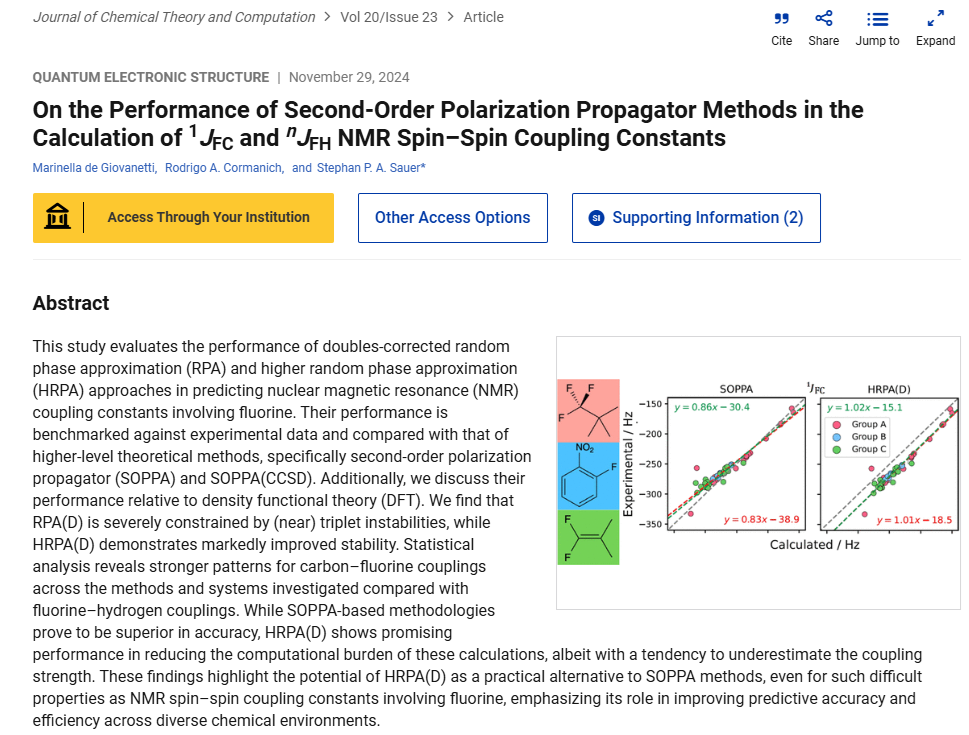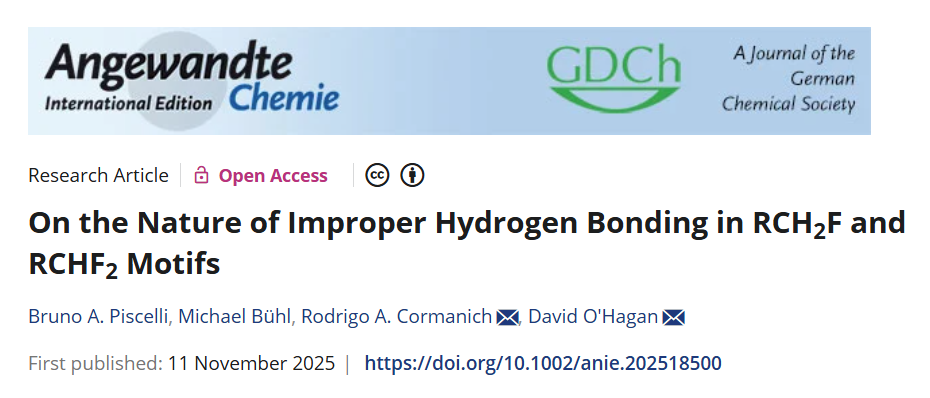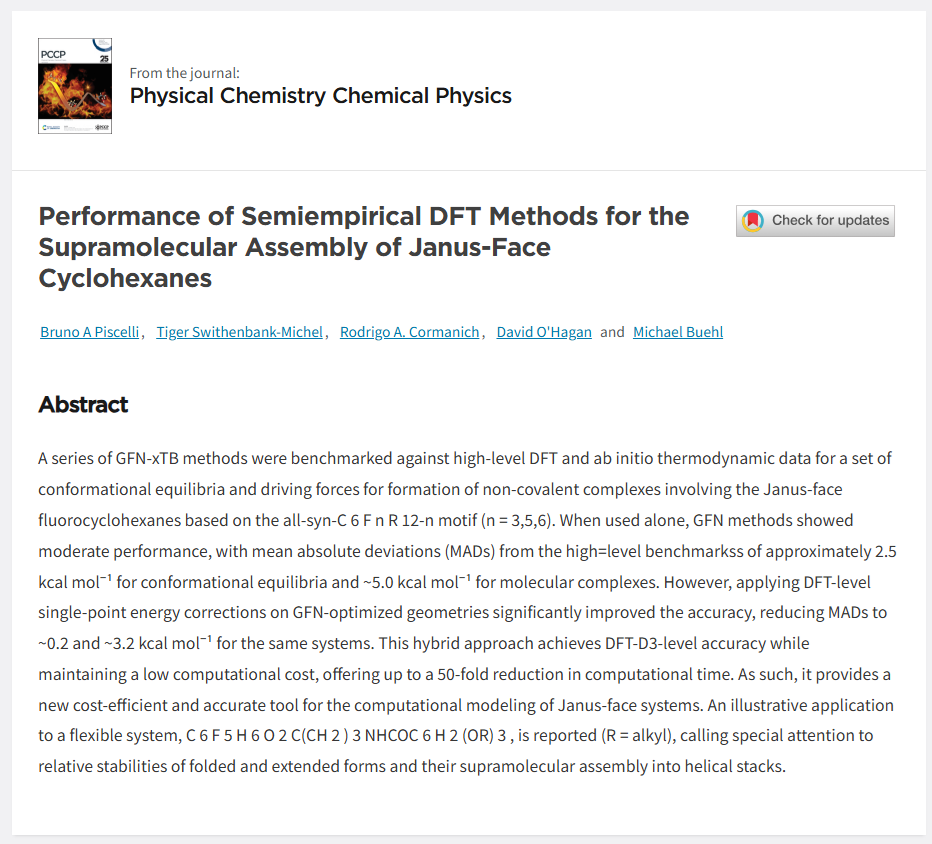In this work, we evaluate the performance of doubles-corrected random phase approximation (RPA) and higher random phase approximation (HRPA) methods in predicting NMR spin–spin coupling constants involving fluorine. By benchmarking these approaches against experimental data and comparing them to SOPPA, SOPPA(CCSD), and density functional theory (DFT), we demonstrate that while RPA(D) is hindered by (near) triplet instabilities, HRPA(D) offers significantly improved stability. Although SOPPA-based methods show superior accuracy, HRPA(D) emerges as a promising alternative, balancing computational efficiency with reasonable predictive power. These findings highlight the potential of HRPA(D) for tackling challenging properties like fluorine-containing NMR couplings, paving the way for more accessible and accurate theoretical tools.
📄 Read the full article here: https://doi.org/10.1021/acs.jctc.4c01043


